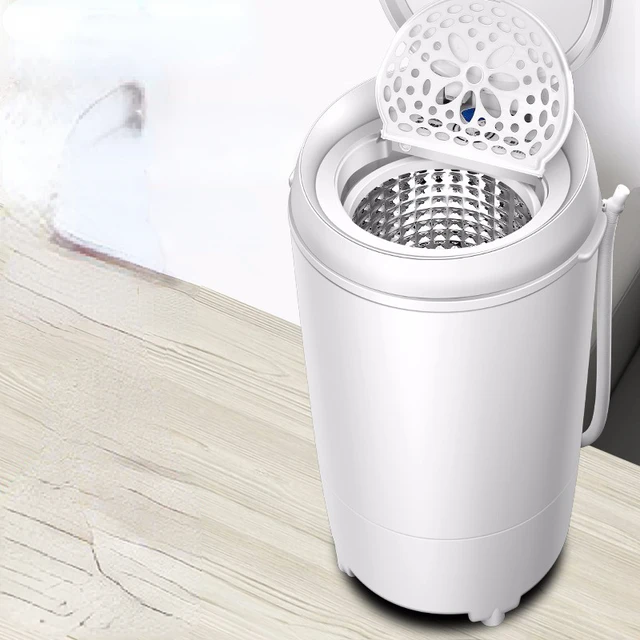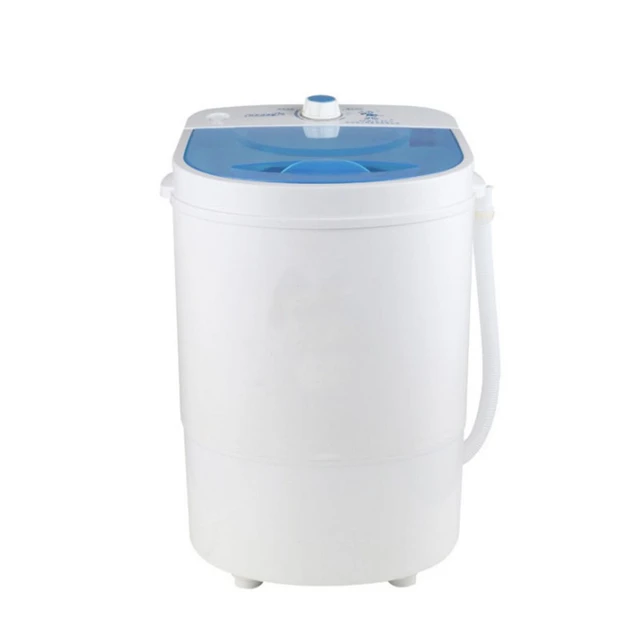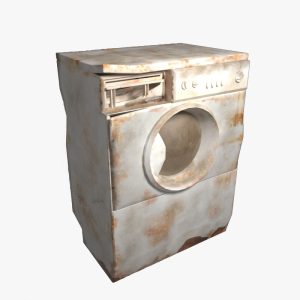How Fast Does a Washing Machine Spin?
The spin speed of a washing machine is a key factor that determines the efficiency of your laundry routine. It influences everything from cleaning performance to drying times and even fabric care. Curiosity about how fast does a washing machine spin leads us into a detailed exploration of spin cycles, their benefits, and the science behind them. This comprehensive guide delves into various aspects of washing machine spin speeds, offering valuable insights to optimize your laundry practices.
Understanding Spin Speed
Spin speed, measured in revolutions per minute (RPM), indicates how many times the drum of a washing machine rotates every minute during the spin cycle. The speed varies greatly, typically ranging from 400 to 1600 RPM depending on the machine and setting.
- Low Spin Speeds: These range from 400 to 600 RPM and are typically used for delicate fabrics to prevent damage. Items like silk, wool, and lingerie benefit from lower speeds.
- Medium Spin Speeds: Falling between 800 and 1200 RPM, these speeds are versatile, suitable for everyday laundry such as cotton and linens. They balance water extraction and fabric care effectively.
- High Spin Speeds: Speeds of 1400 to 1600 RPM are used in high-efficiency washing machines for heavy items such as towels and jeans. These speeds extract a significant amount of water, reducing drying time.
The RPM selection impacts how dry the clothes are post-wash, affecting both energy use and drying times.
Benefits of High Spin Speeds
Utilizing high spin speeds offers several advantages, making it a desirable feature in modern washing machines.
- Increased Water Extraction: Higher spin speeds effectively remove water from clothes, reducing the duration needed for drying. This is particularly beneficial for thick fabrics and bulky items.
- Energy Efficiency: Shorter drying times mean lower energy consumption in dryers, making high spin speeds an eco-friendly choice. Minimizing the energy used for drying can result in cost savings on utility bills.
- Hygiene Benefits: Quick water extraction reduces the likelihood of mold and mildew development in clothes, promoting better hygiene.
These benefits make high spin speeds a valuable feature for efficient laundry practices.
Limitations of High Spin Speeds
Despite the advantages, high spin speeds also come with limitations and potential downsides that users should consider.
- Wear and Tear: The increased mechanical stress can lead to quicker wear on both the washing machine and clothes. Fabrics may suffer from more wear, reducing their lifespan.
- Noise Levels: High RPMs often result in greater noise and vibration. This can be disruptive, particularly in smaller living spaces.
- Delicate Fabrics: Fragile fabrics are at risk of damage under high-speed cycles. Items such as lace, silk, and garments with embellishments require slower spin cycles.
Understanding these trade-offs helps in making informed choices for setting the appropriate spin speed for different laundry loads.
Tailoring Spin Speeds to Fabric Types
Choosing the correct spin speed based on the type of fabric is crucial to maintain the longevity and quality of your clothes.
- Delicates and Hand-wash Items: For delicate fabrics, use the lowest spin speeds (400-600 RPM). This minimizes the risk of stretching or damaging the fibers.
- Everyday Wear: For standard laundry items like shirts and sheets, medium spin speeds (800-1200 RPM) provide a good balance between water extraction and fabric care.
- Heavy Items: For towels, jeans, and bed linens, high spin speeds (1400-1600 RPM) are ideal to extract the maximum amount of water, reducing drying time significantly.
Adjusting spin speeds based on fabric type ensures optimal cleaning and longevity of the clothes.
Technological Advancements in Spin Cycles
Modern washing machines come equipped with advanced technologies that enhance spin cycle efficiency and user convenience.
- Variable Spin Speed Control: Many machines offer adjustable spin speeds, allowing users to tailor the cycle to their specific laundry needs. This flexibility is key to achieving optimal cleaning results.
- Balance Detection Systems: Advanced sensors detect load imbalances and adjust the spin speed accordingly to prevent excessive vibration and noise.
- Inverter Technology: Inverter motors offer quieter and more efficient performance, enhancing the overall wash experience by reducing noise and energy use.
These technological innovations contribute to the improved performance and user experience of modern washing machines.
Energy Efficiency and Spin Speed
The relationship between spin speed and energy efficiency is a compelling aspect of modern laundry practices.
- Reduced Drying Time: High spin speeds decrease the moisture content in clothes, leading to shorter drying times. This conserves energy, particularly when using a dryer.
- Lower Water Usage: Efficient spin cycles extract more water, reducing the need for additional rinse cycles. This conserves both water and energy.
- Eco-Friendly Settings: Many machines feature eco-friendly settings that optimize spin speed and cycle duration to minimize environmental impact without compromising cleaning performance.
Understanding how spin speed influences energy efficiency can help in adopting eco-conscious laundry habits.
Impact on Clothes Longevity
Maintaining the condition of your clothes requires careful consideration of spin speeds, addressing both wear and tear and overall fabric care.
- Minimizing Fabric Stress: Lower spin speeds cause less friction and stretching, preserving the fabric’s texture and elasticity.
- Preventing Pilling: High spin speeds can lead to pilling on synthetic fabrics. Lowering the RPM can reduce this effect, especially for knits and blends.
- Maintaining Color Integrity: High-speed spins can sometimes cause colors to fade faster. Using suitable spin speeds for colored fabrics helps retain their vibrancy longer.
Balancing fabric care with efficient spin speeds prolongs the usability and appearance of clothing.
Special Considerations for Sensitive Items
Certain items demand extra care to ensure they are washed and spun properly, considering both their material and purpose.
- Sportswear: Often made from technical fabrics designed to wick moisture, these should be spun at medium speeds to prevent damage while ensuring efficient water removal.
- Baby Clothes: Delicates like baby clothes benefit from lower spin speeds to maintain their softness and avoid irritation to sensitive skin.
- Bedding: Heavy bedding items such as duvets and comforters require high spin speeds to extract water fully but may need a balance system to prevent machine strain.
Special considerations for sensitive items ensure they are cleaned effectively without damage.
Common Spin Speed Settings and Their Uses
Understanding commonly available spin speed settings and their appropriate uses can optimize your laundry routine.
- Slow (400-600 RPM): Best for delicate items like lingerie and woolen garments. Ideal for fabrics prone to damage and stretching.
- Medium (800-1200 RPM): Suitable for everyday laundry items including t-shirts, jeans, and bed sheets. Balances efficiency and fabric care.
- Fast (1400-1600 RPM): Perfect for thick, durable items such as towels and heavy-duty work clothes. Maximizes water extraction for quicker drying.
By knowing when to use specific spin speeds, you can enhance the efficiency and care of your laundry process.
Maintenance Tips for Spin Efficiency
Maintaining your washing machine ensures it operates at optimal performance, providing effective spin cycles and extending the machine’s life.
- Regular Cleaning: Clean the drum, detergent drawer, and filter regularly to prevent build-up that can affect spin performance.
- Load Balancing: Always distribute laundry evenly in the drum to avoid imbalances that can affect spin efficiency and cause vibrations.
- Inspecting Hoses and Connections: Check hoses and connections for wear and tear to prevent leaks and ensure smooth operation.
Routine maintenance enhances the efficiency and durability of your washing machine’s spin cycles.
 Troubleshooting Spin Cycle Issues
Troubleshooting Spin Cycle Issues
If you encounter issues with the spin cycle, understanding common problems and their solutions can help you troubleshoot effectively.
- Unbalanced Loads: Often causing excessive vibrations, this can be resolved by redistributing the laundry evenly within the drum.
- Faulty Drive Belt: A worn-out drive belt affects the drum’s ability to spin. Inspecting and replacing the belt if necessary can restore proper spin function.
- Blocked Drain Pump: A clogged drain pump can prevent effective water extraction, hampering spin efficiency. Cleaning the pump and checking for blockages can resolve this issue.
Quick troubleshooting can address spin cycle problems and maintain your washing machine’s performance.
Innovations in Washing Machine Design
Modern washing machine designs include innovations that enhance spin cycle performance and reliability.
- Smart Technology: Smart washing machines allow for remote control and monitoring of spin cycles through apps, enhancing convenience.
- Direct Drive Motors: These motors connect directly to the drum, reducing mechanical loss and noise while improving spin efficiency.
- EcoBubble Technology: Some machines use bubbles to dissolve detergent quickly at lower temperatures, allowing for effective cleaning at slow spin speeds, which is gentler on clothes.
These innovations reflect the evolving landscape of washing machine technology, focusing on efficiency and user-friendliness.
Conclusion
So, how fast does a washing machine spin? The speed can range from 400 to 1600 RPM, depending on the machine settings and the type of fabric being washed. High spin speeds offer significant benefits in terms of water extraction, energy efficiency, and shortened drying times, while also presenting certain limitations that must be considered. Tailoring the spin speed to the fabric type and maintaining your washing machine properly can optimize both performance and fabric care. By understanding the impact of spin speeds and leveraging technological advancements, you can enhance your laundry routine, ensuring your clothes are cleaned efficiently and effectively. With these insights, you can make informed choices about the spin cycles that best suit your needs, achieving a balanced approach to laundry care.



